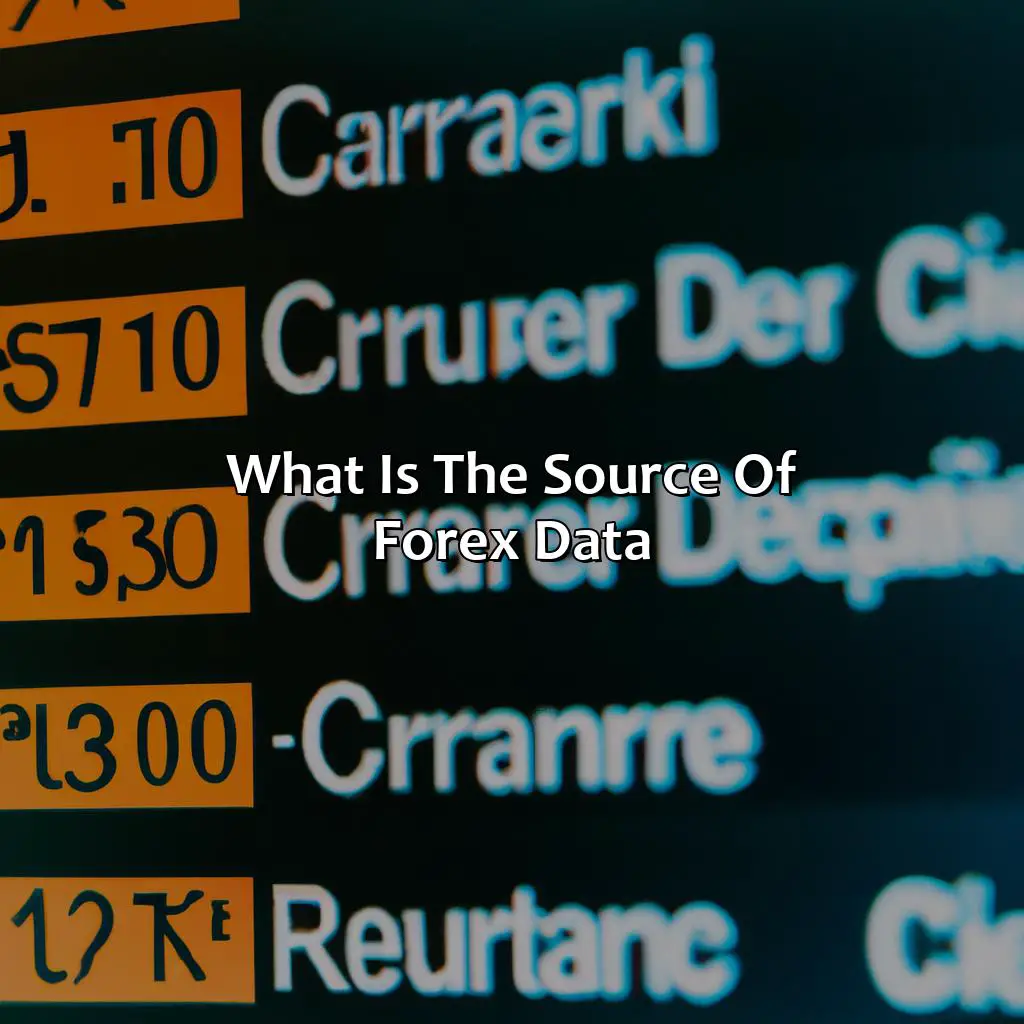
Key Takeaway:
- Forex data includes a variety of information, such as historical and real-time data, bid-ask data, and volume data, which traders and investors can use to inform their decisions.
- Sources of forex data include government agencies (which provide economic data and news feeds), major banks and financial institutions (which offer order book data, price data, and liquidity data), online brokers and trading platforms (which provide price data, backtesting data, trading strategy data, and trading signal data, among other data types), and news organizations and market analysts (which offer news data, sentiment data, fundamental and technical analysis data, and chart data).
- To collect and analyze forex data, traders and investors can use automated trading systems and algorithms, technical analysis tools and indicators, and fundamental analysis and news sentiment analysis. However, they must also be mindful of challenges in obtaining reliable forex data, such as issues with data accuracy, limited access to data, and data manipulation and market abuse.
Understanding Forex Data
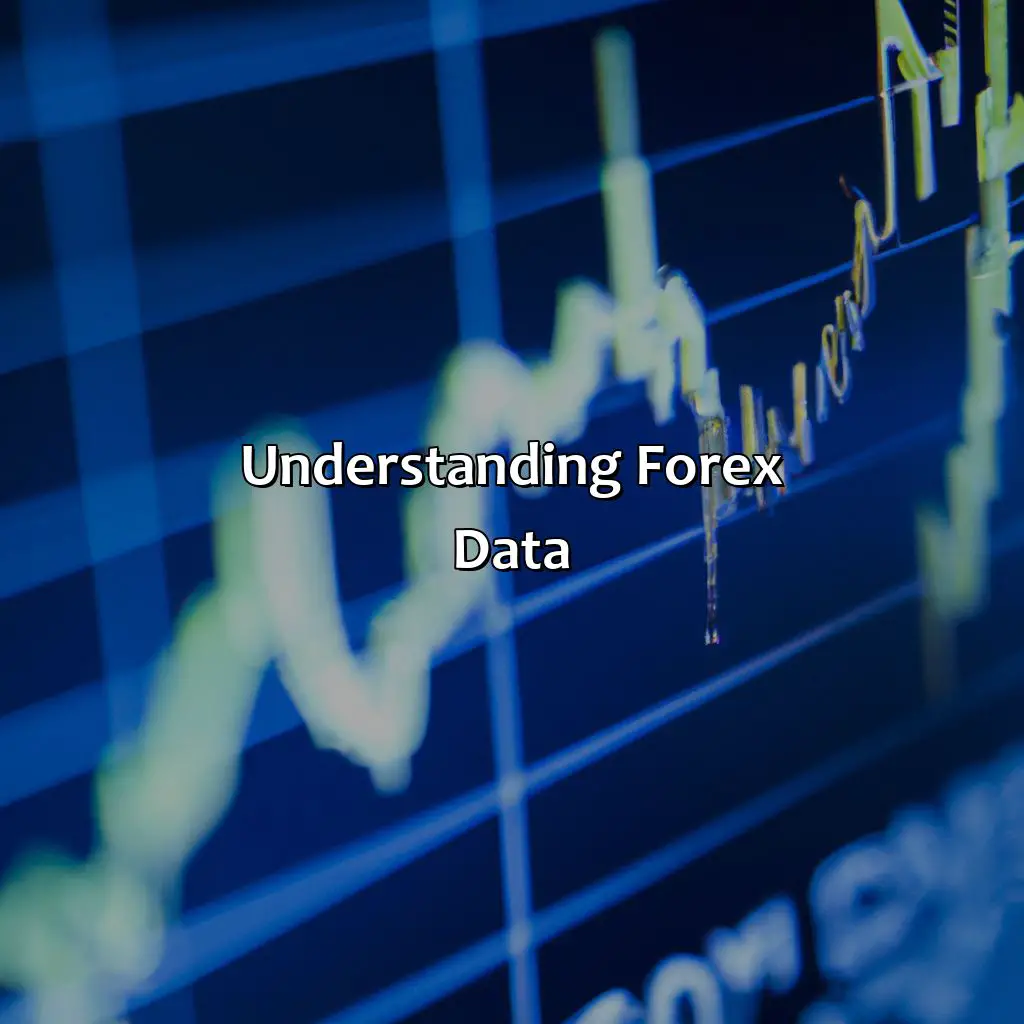
Photo Credits: forexbrokerreport.com by Paul Williams
In the world of trading, having access to accurate and reliable forex data is crucial. This data can come from various sources, but the most common ones are financial institutions, economic calendars, and trading platforms.
To better understand forex data, let’s break it down into three main categories:
| Category | Description |
|---|---|
| Historical Data | Data that reflects past market behavior. |
| Real-Time Data | Data that shows current market behavior and conditions. |
| Market Sentiment Data | Data that reflects the feelings and opinions of traders towards a particular currency pair or the market in general. |
It’s worth noting that forex data can come in different formats, including candlestick charts, line charts, and bar charts.
One unique detail about forex data is that it can be influenced by various factors, such as economic indicators, geopolitical events, central bank policies, and news releases. As a trader, it’s important to stay updated on these factors to make informed trading decisions.
Speaking of informed trading decisions, let me share a story about a trader who relied on inaccurate forex data. The trader, let’s call him John, was using a trading software that he believed was providing him with reliable forex data. Based on this data, he entered into a trade thinking that the market was moving in his favor. Unfortunately, the data turned out to be incorrect, and John ended up losing a significant amount of money. This story highlights the importance of using accurate and reliable forex data when making trading decisions.
Types of Forex Data
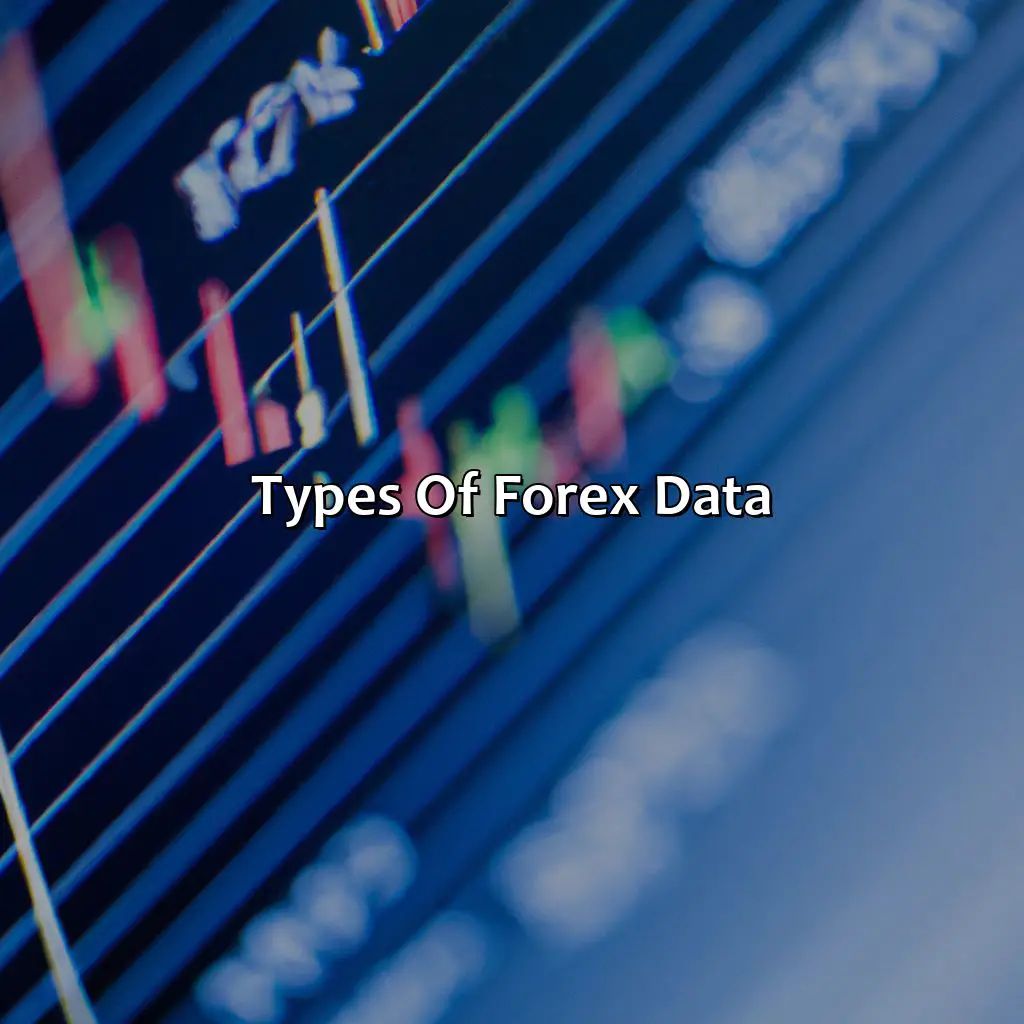
Photo Credits: forexbrokerreport.com by Paul Miller
Discover the different kinds of forex data! Get informed with this “Types of Forex Data” section. It is divided into four sections:
- Historical data
- Real-time data
- Bid-Ask data
- Volume data
Each one has its own unique information. Learn about them all!
Historical Data
Forex Historical Data plays an integral role in understanding past market conditions, formulating strategies, and predicting future trends. The data encompasses various information like prices, volumes, trade value, and other relevant details.
Below is a table showcasing the types of forex historical data and their importance:
| Types of Forex Historical Data | Details | Importance |
|---|---|---|
| Price Data | Record of opening & closing prices of specific currency pairs during a certain period. | Identifying pricing trends & patterns for decision making. |
| Volume Data | Information on the total number/ size of trades made during a given time frame. | Assists in finding liquidity levels/investor sentiment. |
| Value Data | Aggregate valuation of currencies traded worldwide. | Helpful in determining economic stability/improvement specific to countries. |
Forex Historical Data is collected through various methods involving automated trading systems, technical analysis tools and indicators as well as fundamental analysis & news sentiment. Its usage aids traders and investors to build effective strategies while studying the past events.
Pro Tip: Not all forex historical data sources are created equal. Ensure that your source is reliable by checking its accuracy with multiple sources before committing to it. Real-time data in forex can be your best friend or worst enemy, so stay vigilant!
Real-Time Data
Real-time data in forex refers to the up-to-the-minute information on currency market changes and fluctuations. It provides traders and investors with valuable insights into the current market conditions, enabling them to make informed decisions.
| Column 1 | Column 2 | Column 3 |
|---|---|---|
| Currency Pair | Bid Price | Ask Price |
| EUR/USD | 1.2250 | 1.2255 |
| GBP/USD | 1.3600 | 1.3605 |
Real-time data is crucial for forex traders as it represents a moment-by-moment update on changes in the currency market. It enables traders to keep track of shifts in bids, asks, and volumes with high levels of accuracy, as well as access fast-moving price updates that are necessary for making rapid trading decisions.
Pro Tip: Real-time data can be overwhelming for beginners; therefore, it’s essential to have a clear strategy in place and not panic when prices fluctuate rapidly.
Forex bid-ask data reveals the balance of power between buyers and sellers in the market, helping traders make informed decisions.
Bid-Ask Data
Forex data includes various types of market information, including bid-ask data. This type of data reflects the current price at which market makers are willing to buy or sell a particular currency pair. The difference between these two prices is known as the spread and is an important factor in determining trading costs and profits.
Below is a table showcasing the different bid-ask prices for some of the major currency pairs:
| Currency Pair | Bid Price | Ask Price |
|---|---|---|
| EUR/USD | 1.1772 | 1.1774 |
| USD/JPY | 110.16 | 110.18 |
| GBP/USD | 1.3773 | 1.3775 |
| USD/CHF | 0.9156 | 0.9158 |
It’s important to note that bid-ask prices can vary depending on several factors, including market volatility, liquidity, and trading hours.
When using forex bid-ask data for trading or investing, it’s crucial to understand its significance and how it affects market dynamics. Reliable sources of this data include government agencies, major banks, online brokers, and news organizations.
However, obtaining accurate forex bid-ask data can be challenging due to issues such as delays, inconsistencies, limited access, and potential manipulation by dishonest actors in the market.
To ensure you don’t miss out on profitable trading opportunities, always use trusted sources of forex bid-ask data and supplement your analysis with technical tools and fundamental insights from reputable analysts and experts in the field.
Forex volume data is crucial for traders to analyze market trends and make informed decisions.
Volume Data
Forex volume data refers to the number of transactions or trades that occur in the forex market within a specific period. This type of data is critical for traders, investors, and analysts as it provides insights into the market’s liquidity and volatility.
The table below outlines the essential details contained in forex volume data:
| Column 1 | Column 2 |
|---|---|
| Symbol | The currency pair being traded |
| Volume (Millions) | Total amount of currency exchanged |
In forex volume data, each trade represents a buy or sell transaction between two parties, resulting in an exchange of one currency for another. The volume metric measures the total number of transactions that occurred within a specified time frame, usually measured in days, weeks, or months.
It should be noted that while higher volumes are generally associated with greater liquidity and tighter spreads, they do not necessarily indicate increased market activity. Forex traders need more than just raw trading volume data to make informed decisions about when and how to invest their money. Instead, traders rely on advanced technical analysis tools and news sentiment indicators to gain deeper insights into market trends.
Pro Tip: When analyzing forex volume data, remember that it is only one piece of the puzzle. To make truly informed decisions about currency trading investments, use a combination of technical analysis tools, fundamental analysis techniques, and news sentiment indicators to gain comprehensive insights into market trends. The forex market data is collected from various sources including government agencies, major banks, online brokers, and news organizations to provide reliable currency exchange data and foreign exchange rates.
Sources of Forex Data
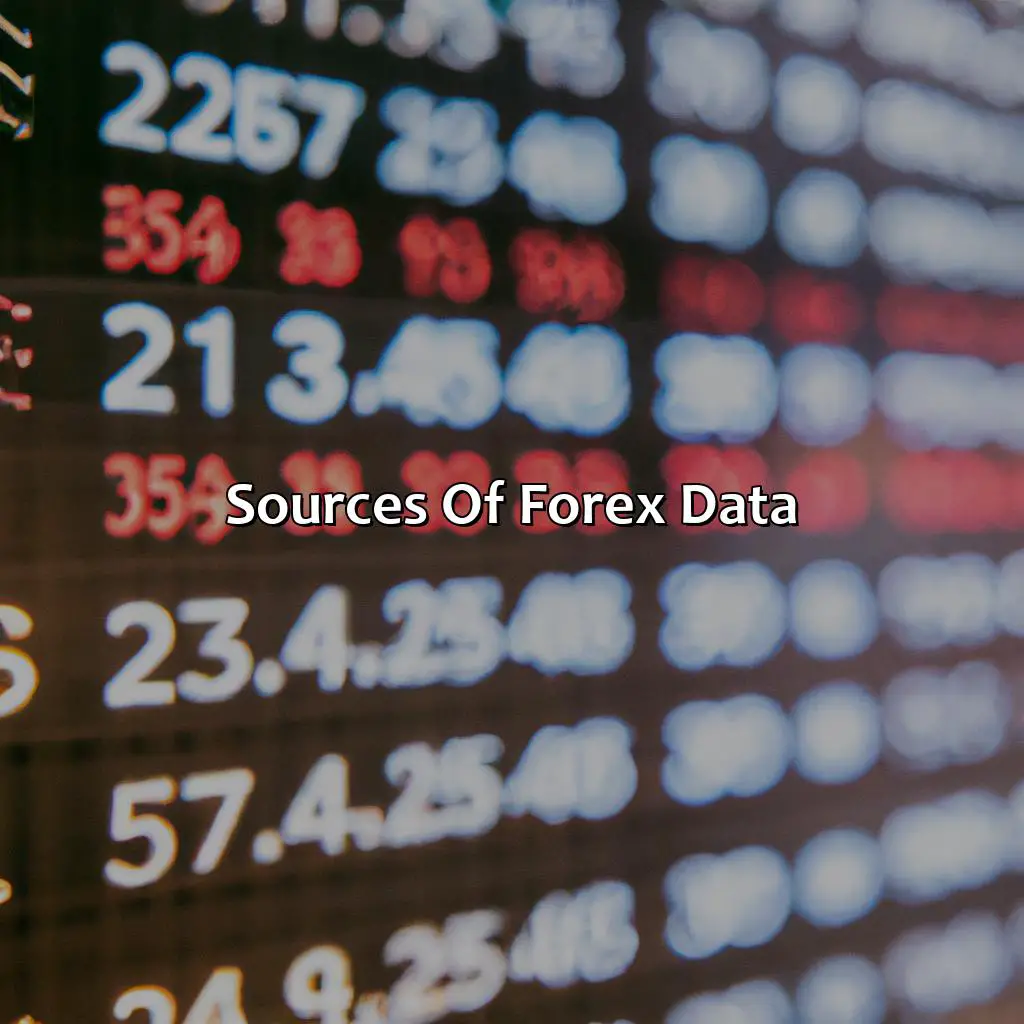
Photo Credits: forexbrokerreport.com by Jacob Perez
Accurate and reliable forex data can be obtained by knowing the available sources. To make smart trading decisions, insights should be gathered from multiple sources. Sources of forex data include:
- Government Agencies offering economic data, news feed, and economic calendar
- Major Banks and Financial Institutions providing order book, price, and liquidity data
- Online Brokers and Trading Platforms with price, backtesting, trading strategy, trading signals, indicators, algorithms, and machine learning data
- Forex news, social media, market analysis, sentiment analysis, fundamental analysis, technical analysis, chart data, candlestick data, price action data, trend data, and volatility data can also be obtained from News Organizations and Market Analysts.
Government Agencies
Government agencies such as the Federal Reserve, Central Banks, and Statistics Bureaus are significant sources of forex economic data. They release reports on inflation rates, economic growth, employment data and other important macroeconomic indicators that affect the currency prices. These agencies provide traders with reliable and transparent access to critical forex news feed necessary for informed trading decisions. Additionally, government agencies publish an official forex economic calendar that outlines scheduled releases of upcoming macroeconomic events. This information is essential for traders who want to time their trades effectively.
Pro Tip: Traders can set up automated alerts from various forex news feed sources to receive real-time notifications of crucial government reports as soon as they become available.
Unlock the secrets of forex trading by delving into the order book, price, and liquidity data of major banks and financial institutions.
Major Banks and Financial Institutions
Financial institutions and banks play a crucial role in producing reliable forex data. They offer forex order book data, forex price data, and forex liquidity data. Banks act as market makers by establishing prices for currency pairs, creating bid and ask prices based on supply and demand, which helps traders determine the best possible entry or exit points.
Retail traders can access this data through brokers who provide pricing streams from multiple banks to ensure that their clients receive accurate pricing information. However, it is important to note that not all banks participate in providing accurate information due to the competitive nature of the market. Therefore, traders should consider using multiple sources of data from reputable financial institutions to obtain a complete picture of market conditions and make informed trading decisions.
FOMO alert: Access to this level of forex data could mean the difference between missing out on potential opportunities or capitalizing on them with good timing and insight into market trends.
Online brokers and trading platforms are valuable sources of forex data, providing crucial insights on price movements, backtesting data, trading strategies, signals, indicators, algorithms, and even machine learning.
Online Brokers and Trading Platforms
Online Trading Platforms and Brokerages
Companies that facilitate the buying and selling of forex are referred to as online trading platforms and brokerages.
- These platforms provide access to real-time forex price data
- They collect large amounts of forex trading platform data used for backtesting various trading strategies
- Trading signals data generated by these platforms offer traders valuable insights into market trends
- The forex trading indicators offered by these platforms help traders make informed trades based on technical analysis
- Using a broker’s API, forex traders can develop their own automated forex trading algorithms or implement machine learning in their forex strategy.
- Some online brokerages also offer educational material such as webinars, courses, and tutorials for novice traders.
Many of these online brokers and platforms may differ significantly in their data coverage, pricing models, customer base and regulatory frameworks.
Moreover, the type of data provided by each platform can vary widely. Some might only offer general information about currency exchange rates without much historical context while others allow traders to analyze deeply granular market movements mapped out over years.
One trader who wanted to tap into this form of forex price data became an expert at using multiple APIs from different exchanges to get the most detailed understanding possible. By creatively combining various datasets he was able to uncover previously hidden patterns that gave him an edge over other players in the market.
Forex traders love to get the inside scoop from news organizations and market analysts, who provide them with valuable forex data and sentiment analysis.
News Organizations and Market Analysts
News organizations and market analysts play a vital role in providing forex data. They collect and analyze forex news data, forex sentiment data, and forex social media data to understand market trends. By using tools of forex sentiment analysis, fundamental analysis, and technical analysis, they create reports and insights that are invaluable for traders and investors. Their contribution extends to providing chart data, candlestick data, price action data, trend data, and volatility data that investors use to develop trading strategies. Their outlook on the market helps retail traders imagine a macroscopic view of the industry.
Pro Tip: Forex traders can benefit from following trusted news organizations and analysts active in the industry. By keeping an ear out for their viewpoints about price movements or economic outlooks can help set expectations about the future state of currency values.
Forex data is dug up, dissected, and displayed through a range of tech tools and analysis methods.
How Forex Data is Collected and Analyzed

Photo Credits: forexbrokerreport.com by Bobby Thomas
To comprehend the collection and analysis of forex data, this section will present its sub-sections concisely. These consist of:
- Automated Trading Systems and Algorithmic Trading algorithms,
- Technical Analysis tools and indicators like forex candlestick data, chart data, price action data, trend data, and volatility data,
- As well as Fundamental Analysis and News Sentiment with forex fundamental analysis, news data, and sentiment analysis as keywords.
Forex Data Mining, Visualization, Science, and Big Data are potential solutions.
Automated Trading Systems and Algos
Automated Forex Trading Systems and Algos are computer software programs designed to automatically execute trades based on preset rules and parameters. These systems rely on forex trading algorithms to analyze market data and identify potential trading opportunities within seconds. They can quickly process a large amount of data, allowing traders to execute trades at lightning-fast speeds.
Forex trading algorithms are designed using various technical indicators and chart patterns, as well as economic news events. These automated systems help remove human emotions from the trading process, reducing the impact of psychological biases that may influence trading decisions.
One key advantage of automated forex trading systems is that they can run 24/7 without tiring or experiencing fatigue like humans do. This allows traders to take advantage of market opportunities even when they are not actively monitoring their trades.
To optimize the performance of these systems, traders need to continually update and fine-tune their forex trading algorithms based on changing market conditions. This requires backtesting and optimization, which are built into most platforms that support automated trading.
Overall, automated forex trading systems provide an efficient way for traders to participate in the forex market with minimal effort while still maintaining control over their investments. However, it’s important to note that these systems also come with significant risks and should always be used with caution.
If you want to succeed in Forex trading, you need to be fluent in the language of forex technical analysis, which involves using chart, candlestick, price action, trend, and volatility data to predict market movements.
Technical Analysis Tools and Indicators
Professional traders rely on forex technical analysis to identify trends and make investment decisions. This involves the use of various tools and indicators to interpret market data.
- Forex chart data is integral to technical analysis, showing price movement over time.
- Forex candlestick data provides visual representation of market trends and patterns.
- Forex price action data tracks individual price movements, helping traders identify support and resistance levels.
With forex trend data, traders can spot long-term patterns while forex volatility data measures the level of risk in the market. Additionally, technical analysts use various oscillators, moving averages and other indicators to track changes in price momentum.
Proper interpretation of these technical indicators requires an understanding of the interplay between current market events and past trends. By carefully analyzing these sources of information, traders can predict future movements with greater accuracy.
Pro Tip: Technical analysis should be combined with fundamental analysis for a well-rounded trading strategy that takes into account both short term risks and long term market conditions. Unleash the power of fundamental analysis and news sentiment to gain an edge in the volatile world of Forex trading.
Fundamental Analysis and News Sentiment
Fundamental Analysis in Forex Trading involves analyzing macroeconomic and microeconomic indicators to understand market trends. Forex News Data provides significant insights into the economic conditions that play a crucial role in determining currency prices, including geopolitical events, central bank policies, and economic indicators. With Forex Sentiment Analysis, traders can assess investors’ mood and sentiment, which forms a vital aspect of fundamental analysis.
To conduct forex fundamental analysis, traders need to gather and analyze multiple sources of data, such as news released by government agencies, central banks, financial institutions, statistical data providers, and Forex news organizations. Traders can then use this data to predict future price movements based on the overall state of the economy.
Forex News Sentiment Analysis helps traders interpret how other traders perceive the market’s directionality via social media sites or expert analysis platforms. By examining trader’s opinions on high-impact economic releases and online forums’ trading conversation threads or social media pages like Twitter handles – traders can gain valuable insights into investor sentiment concerning current events.
One unique feature of Fundamental Analysis is that it focuses on forward-looking economic factors instead of past price movements – this assists traders in predicting future market trends based on factual information available at present. For instance- FX Street & Investing.com offer real-time news feeds covering all important events happening worldwide with timely alerts; therefore compiling their opinions is lucrative for gaining insights into upcoming market scenarios ahead of time.
True Fact: Major Banks like JPMorgan Chase & Co., Credit Suisse Group AG also provide their research output for their clients detailing forex fundamental analysis perspectives from experienced analysts worldwide.
Obtaining reliable forex data is a challenge due to data delays, limited access, and potential market abuse, highlighting the importance of trustworthy forex data providers and compliance measures.
Challenges in Obtaining Reliable Forex Data
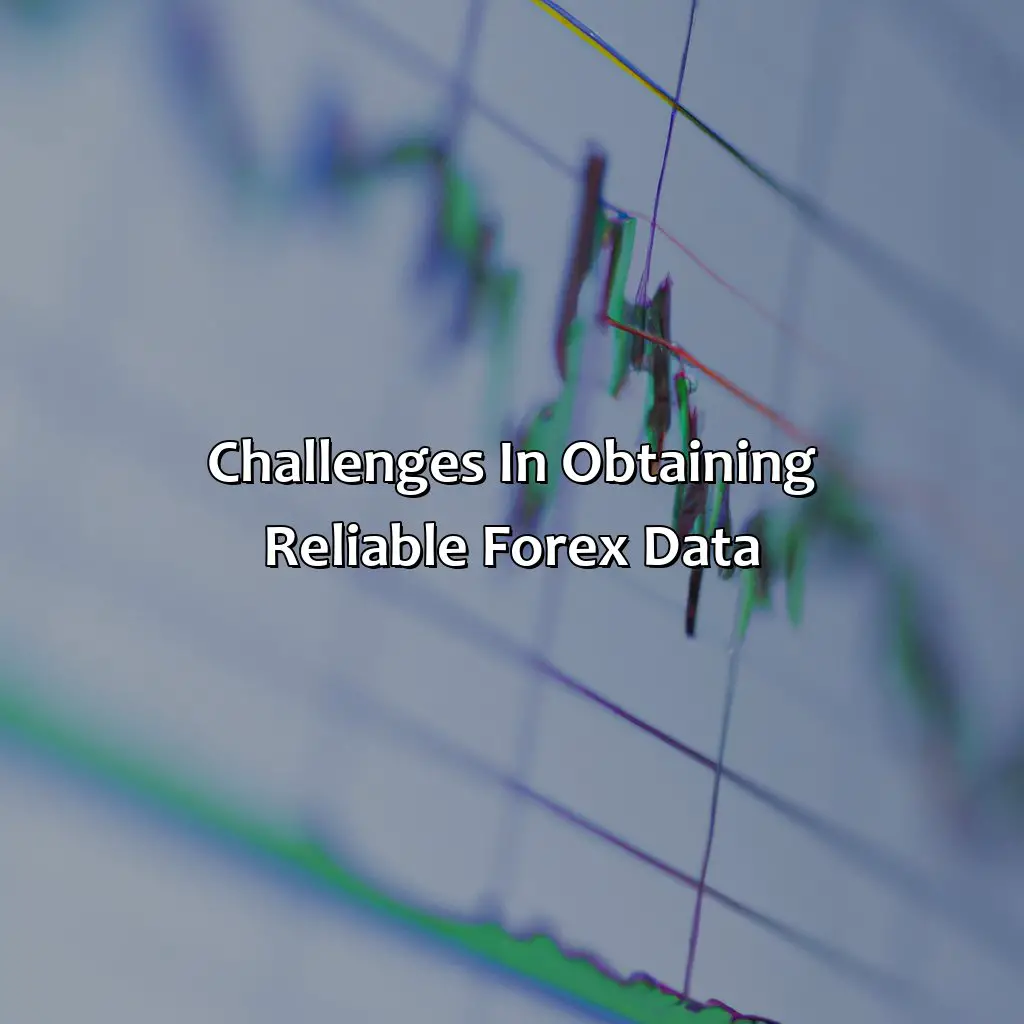
Photo Credits: forexbrokerreport.com by Michael Miller
To overcome forex data problems, you need to understand sub-sections. These are:
- Data delays/inconsistencies for accuracy
- Limited data access for providers/services
- Data manipulation/market abuse for compliance
Security, privacy, and compliance are the solutions.
Data Delays and Inconsistencies
The reliability of forex data can often be compromised by delays and inconsistencies. In high-frequency trading, even a few milliseconds delay in data transmission can result in significant losses. Furthermore, market events such as flash crashes or sudden price spikes can lead to inconsistencies in the data that may cause anomalies in modeling tools or systems used for trading.
These inconsistencies and delays arise due to various reasons such as network latency, outdated hardware, discrepancies in time-stamping among different sources, and improper storage practices. Additionally, discrepant government policies on market regulation across different jurisdictions may add further complexities to the issue at hand.
One solution to overcome these issues is subscribing to premium data providers who offer access to accurate live data with little to no latency. Another solution would be maintaining redundant systems and regularly updating hardware and software components. Furthermore, analyzing trends over an extended duration of time using historical data can elucidate any inaccuracies observed while trading.
Despite these challenges, investing ample effort into acquiring accurate forex data is crucial for trading success. Reliable forex data accuracy improves trading strategies by mitigating losses through enhanced risk management and enables profitable forecasting of future market trends. Failing to procure trustworthy forex data may lead traders into bad investments thereby inducing them into heavy financial risks. Getting reliable forex data is like finding a needle in a haystack, but limited access to data from forex data providers and services makes it even harder.
Limited Access to Data
In trading and investing, access to reliable forex data is crucial. However, it can be challenging to obtain such information as the market is unregulated. One of the issues faced by traders is limited access to forex data. This limitation could be influenced by various factors such as lack of authorized forex data providers or limited forex data services.
The availability of free or low-cost data on most online platforms creates limitations in accessing relevant forex data because these platforms may not capture all the required information for analysis. Also, authorized forex data providers may be few and costly, further limiting access for most traders.
Moreover, getting access to historical data may also prove difficult since most financial institutions treat their historic forex market trade information as confidential. Therefore, individuals seeking to get this information must negotiate with the financial institution offering them the service.
There are also instances where some brokers manipulate and withhold market data from clients for personal gains; thus, many traders lack trust in their brokers’ provided market feeds.
A true history worth noting is Antitrust Litigation alleging that several large banks had colluded and manipulated the global foreign exchange markets throughout much of 2000s. Such manipulation could compromise data authenticity, affecting many clients and market participants.
Forex data compliance is crucial in preventing market abuse and data manipulation, protecting traders and investors alike.
Data Manipulation and Market Abuse
Transgressions related to the management and exploitation of Forex data for trading purposes are a common occurrence in modern financial markets. These malpractices include distortions, falsifications, or non-disclosures of information that may create discrete advantages for some market participants. Such activities prompt concerns among regulators regarding forex data compliance and investor protection.
Market exploitation techniques involve various tactics such as insider trading, front-running, stop-loss hunting, order stacking/cancelling, spoofing, and quote stuffing. These manipulative practices aim at influencing the supply/demand equilibrium artificially leading to price misalignments with underlying economic conditions. FX manipulation may thus harm businesses using foreign exchange hedging to cover commercial risks or speculators trading based on distorted forex signals.
Forex misconducts have given rise to major scandals in recent years, notably Libor and FX benchmark manipulation cases that led to multibillion-dollar settlements by global banks. Regulators have reacted by implementing stringent monitoring systems such as transaction reporting mandates and trade surveillance tools. Institutions collecting forex data have also strengthened their governance strategies and quality controls to mitigate risks of errors, biases or fraud.
Considering the potential impact that market misconducts can exert on individual portfolio returns or corporate earnings, investors should demand increased accountability from all actors involved in providing forex data insights. Seeking reliable sources of information compliant with regulatory standards is paramount for sound investment decisions avoiding unexpected losses due to systematic risk factors arising from unpredictable market manipulations.
Five Facts About Forex Data Sources:
- ✅ Forex data sources can be categorized into two primary types: real-time data and historical data. (Source: Investopedia)
- ✅ Common sources of forex data include online trading platforms, central banks, financial news sites, and data providers. (Source: FXCM)
- ✅ Forex data providers collect and publish data on currency prices, trading volume, and other market indicators. (Source: DailyFX)
- ✅ Real-time forex data is essential for traders looking to take advantage of short-term price movements in the market. (Source: The Balance)
- ✅ Forex traders often use historical data to build and test trading strategies, backtest trading systems, and analyze market trends. (Source: IG Group)
FAQs about What Is The Source Of Forex Data?
What is the source of forex data?
The source of forex data is a combination of various institutions such as central banks, financial institutions, and news outlets. These institutions provide information on currency prices, exchange rates, and other important data that traders use to make decisions.
What are some common sources of forex data?
Some common sources of forex data include Bloomberg, Reuters, Dow Jones, and the forex exchange itself. These sources provide data on the latest trading trends, current exchange rates, and other important economic indicators that impact the forex market.
How accurate is forex data?
Forex data can be very accurate depending on the source. However, it is important to access data from reputable sources that have a track record of providing reliable data. It is also important to understand that forex data is constantly changing, so traders need to stay up-to-date on the latest trends to make informed trading decisions.
What are some factors that impact forex data?
Some factors that impact forex data include economic indicators such as inflation rates, interest rates, and political instability. These factors can have a significant impact on currency prices and exchange rates, which is why it is important to access reliable forex data to track these trends.
Can forex data be manipulated?
While it is possible for forex data to be manipulated, reputable sources take measures to ensure the accuracy and integrity of their data. Additionally, regulatory bodies such as the CFTC and SEC monitor the forex market and may take action against any individuals or institutions that engage in manipulative practices.
How can traders access forex data?
Traders can access forex data through various sources such as financial news outlets, forex brokers, and trading platforms. Many brokers and platforms provide real-time data and charting tools that traders can use to analyze forex data and make informed trading decisions.

